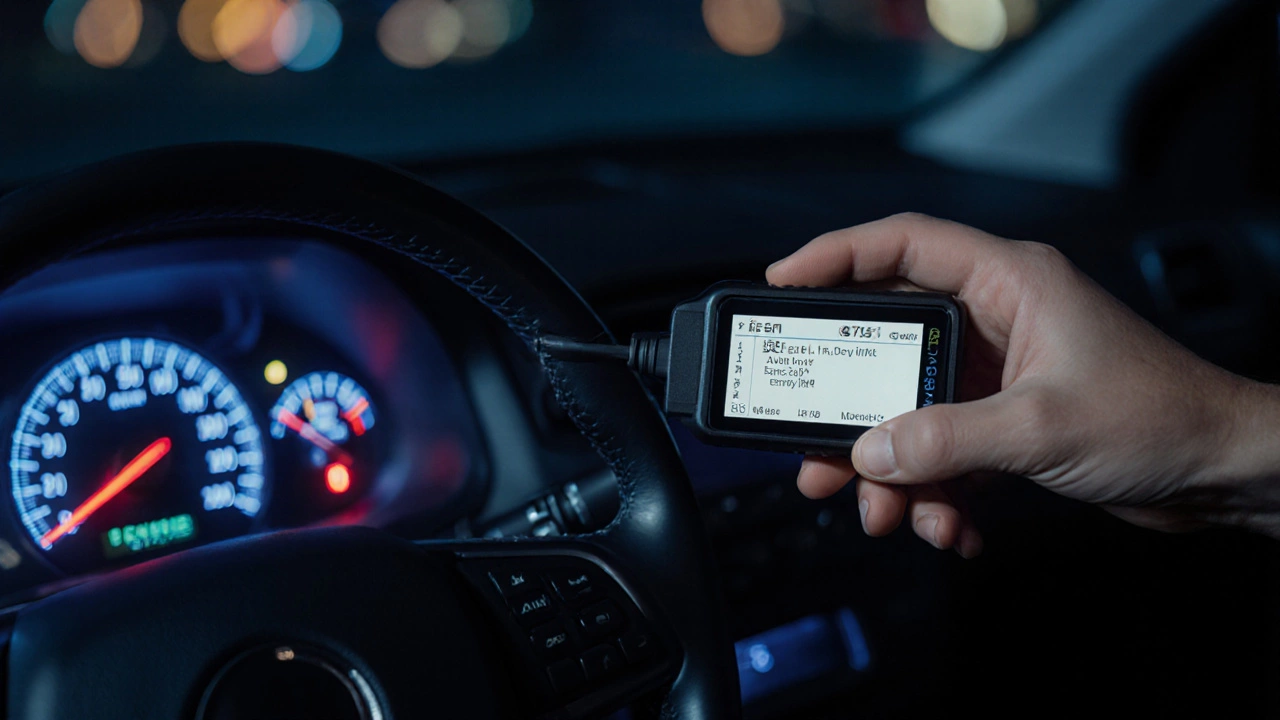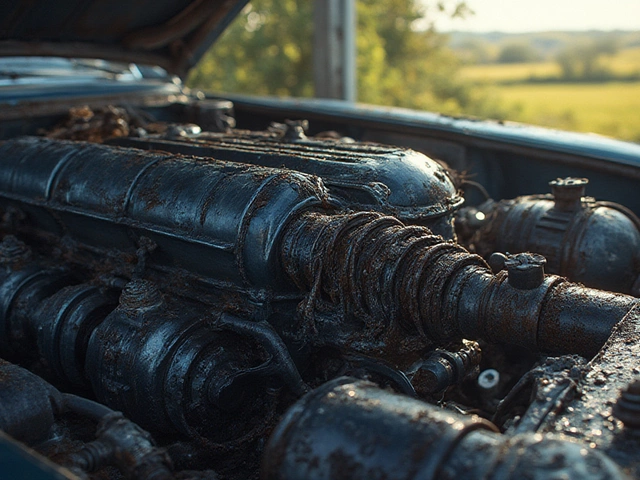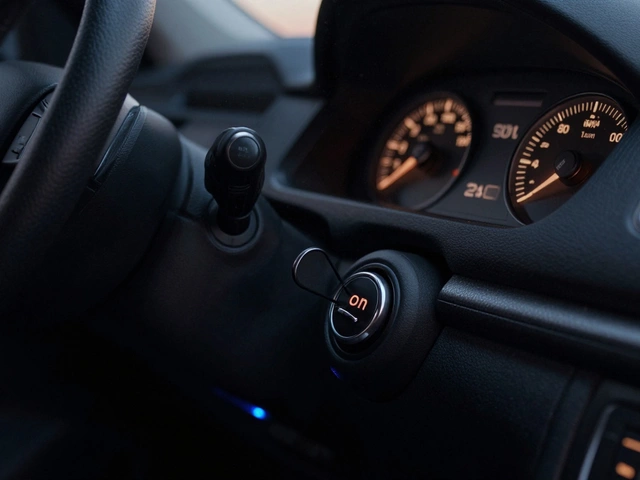You turn the key, and your car sputters like it’s gasping for air. The check engine light flashes. You grab your OBD2 code reader, plug it in, and hope for a clear answer: fuel pump failure. But here’s the truth-most code readers won’t tell you outright that your fuel pump is bad. Not directly. Not like they would for a misfiring spark plug or a faulty oxygen sensor.
What a Code Reader Can and Can’t Do
Modern code readers scan your car’s onboard computer for error codes stored in the ECU. These codes are triggered by sensors detecting abnormal readings. A bad fuel pump doesn’t send a signal that says, ‘I’m broken.’ Instead, it causes symptoms that other sensors notice-and then those sensors throw their own codes.
For example, if the fuel pump can’t deliver enough pressure, the engine runs lean. That means not enough fuel is reaching the combustion chamber. The oxygen sensor picks this up and throws a P0171 or P0174 code: ‘System Too Lean (Bank 1 or Bank 2).’ That’s not a fuel pump code. It’s a symptom. The code reader gives you a clue, not a diagnosis.
Some cars might throw a P0087 code: ‘Fuel Rail/System Pressure Too Low.’ This one is closer to the truth. It suggests the fuel system isn’t maintaining pressure. But even then, it could be a clogged fuel filter, a leaking fuel pressure regulator, or a failing fuel pump. The code reader doesn’t know which.
Why Fuel Pumps Don’t Show Up as ‘Bad’
Fuel pumps are mechanical devices. They don’t have internal electronics to report their own health. Unlike a spark plug that fires a signal or a sensor that sends voltage data, a fuel pump just spins. If it’s weak, it doesn’t scream. It just doesn’t deliver enough fuel under load.
Think of it like a water pump in your house. If the pressure drops, your shower gets weak. But the water meter doesn’t say, ‘Pump failing.’ It just shows less flow. Your car’s system works the same way.
Some newer vehicles have fuel pump monitoring circuits that track current draw or speed. If the pump draws too much current (signaling it’s struggling) or stops spinning entirely, the ECU might log a code like P0627: ‘Fuel Pump ‘A’ Control Circuit.’ But even this code doesn’t confirm the pump is dead-it could be a wiring issue, a bad relay, or a blown fuse.
What Codes You Might See Instead
If your fuel pump is going bad, here are the most common codes you’ll actually see:
- P0171 / P0174 - System Too Lean (Bank 1 or 2)
- P0087 - Fuel Rail/System Pressure Too Low
- P0300 - Random/Multiple Cylinder Misfire
- P0301-P0308 - Cylinder-Specific Misfires
- P0627 - Fuel Pump ‘A’ Control Circuit (less common, vehicle-dependent)
None of these say ‘fuel pump.’ They all point to engine performance problems that could be caused by low fuel pressure. That’s why mechanics don’t just rely on code readers. They test fuel pressure with a gauge.
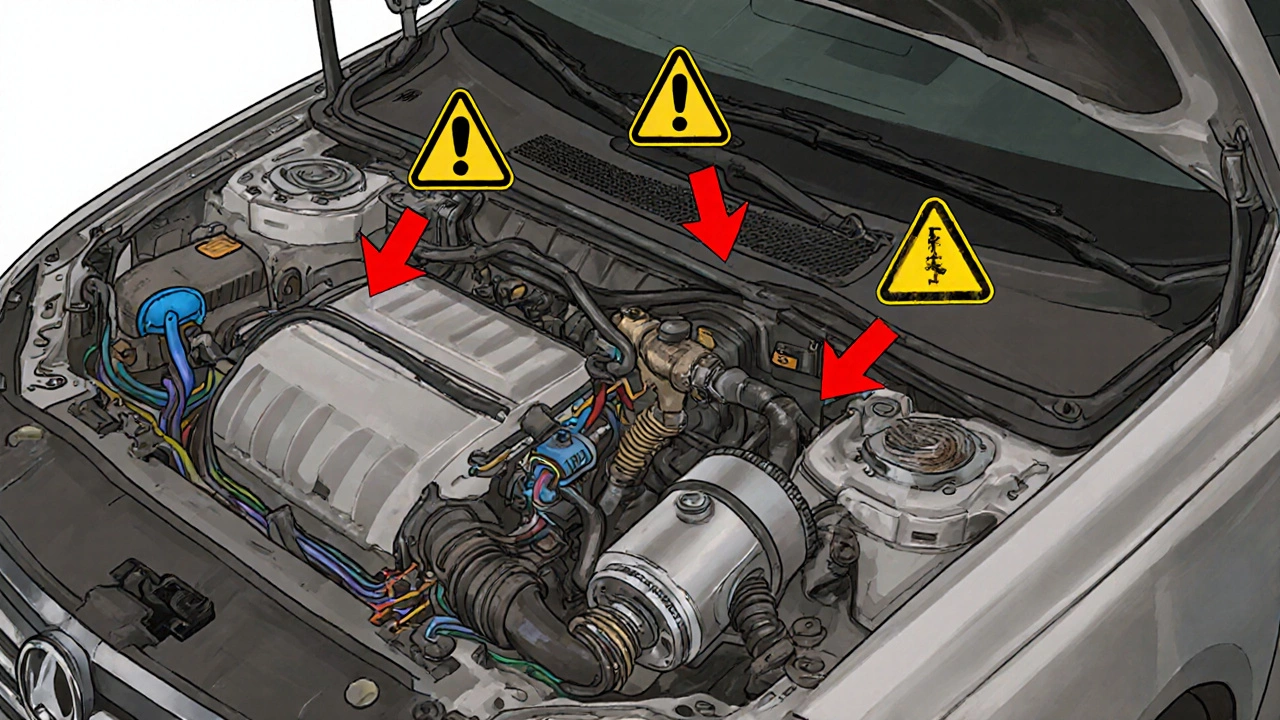
How to Really Test a Fuel Pump
Here’s what actually works: a fuel pressure gauge. You hook it up to the fuel rail’s test port (usually under the hood, near the injectors). With the engine off, turn the key to ‘on’-you should hear the pump prime. Then start the engine.
For most gasoline cars, normal pressure sits between 30-60 psi. If you’re reading under 25 psi under load, your pump is struggling. If it drops to 15 psi when you accelerate, it’s failing. That’s a real diagnosis. Not a code. A measurement.
Another simple test: listen. When you turn the key to ‘on’ (before starting), you should hear a brief whirring sound from the rear of the car-right where the fuel tank is. If you hear nothing, check the fuse and relay first. If those are fine and there’s still silence, the pump likely isn’t working.
And here’s a trick: tap the fuel tank gently with a rubber mallet while someone cranks the engine. If the car starts after a few taps, it’s a classic sign of a worn pump with a stuck brush or internal debris. It’s not foolproof, but it’s a quick way to suspect the pump before you drop the tank.
Other Signs Your Fuel Pump Is Failing
Code readers miss these-but your driving experience won’t:
- Engine sputters at high speeds - Like you’re running out of gas, even when the tank is half full.
- Loss of power under load - The car struggles to climb hills or pass on the highway.
- Engine won’t start, but cranks - You hear the starter turning, but the engine won’t catch. No fuel = no combustion.
- Intermittent stalling - The car dies while idling, then starts again after sitting for a few minutes.
- Whining noise from the fuel tank - A loud, high-pitched whine isn’t normal. It means the pump’s bearings are wearing out.
If you notice two or more of these, don’t wait for a code. Start testing.
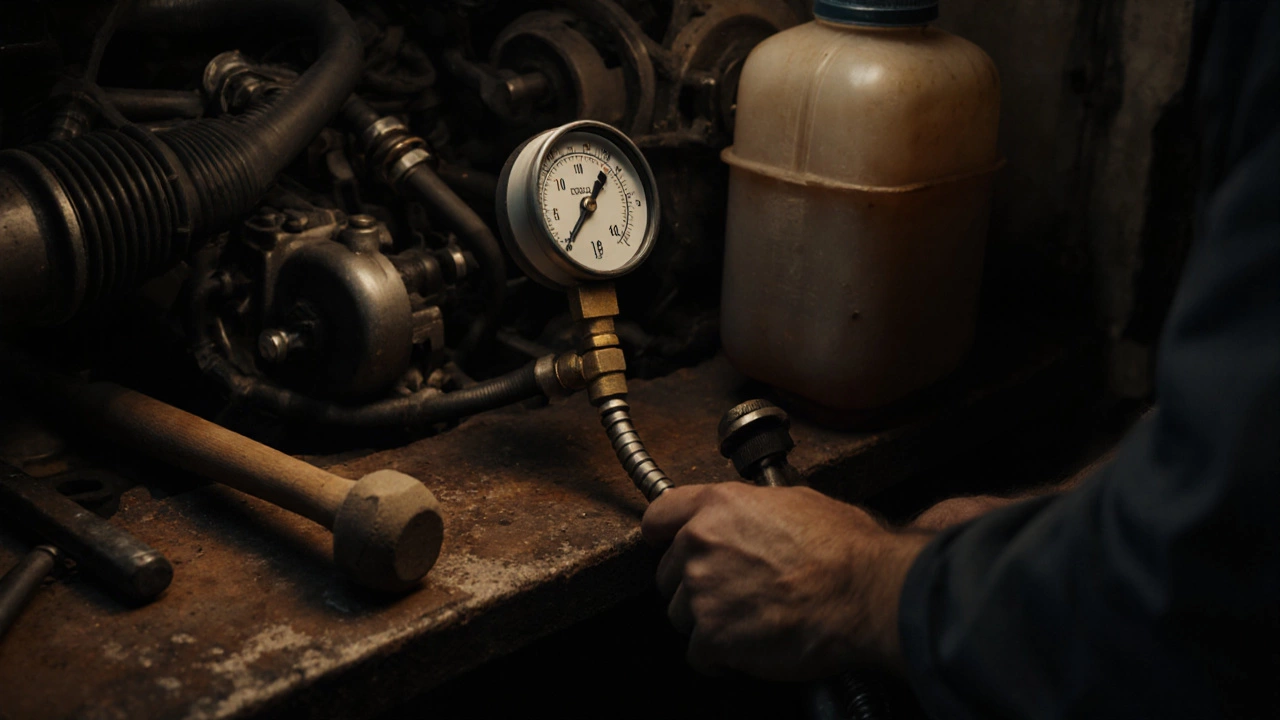
What to Do If You Suspect a Bad Fuel Pump
First, rule out the easy stuff. A clogged fuel filter is cheaper and easier to replace. Most manufacturers recommend replacing it every 40,000-60,000 miles. If yours hasn’t been changed in 80,000 miles, that’s your first suspect.
Next, check the fuel pump relay and fuse. These are cheap and simple. Swap the relay with another one in the fuse box (like the horn or A/C relay) to test. If the car starts after swapping, you found your problem.
If both are fine, it’s time for the pressure test. You can buy a fuel pressure gauge for under £30 online. Or take it to a garage-most will do the test for £40-£60. That’s far cheaper than replacing the pump only to find out it was the filter.
And if it is the pump? Replacing it isn’t a weekend job. You’ll need to drop the fuel tank. That’s messy, dangerous if you don’t relieve fuel pressure first, and requires safety gear. If you’re not experienced, leave it to a professional. A bad fuel pump job can lead to fire risk if done wrong.
Can a Code Reader Help at All?
Yes-but only as a starting point. It tells you something’s wrong. It doesn’t tell you what. Think of it like a smoke alarm. It doesn’t tell you if the fire is in the kitchen or the garage. You still need to go look.
Use the code reader to narrow down the problem. If you see P0087 and P0300 together, and your car sputters on the highway, your fuel pump is the prime suspect. But you still need to measure pressure to confirm.
Modern code readers with live data can show fuel trim numbers. If long-term fuel trim is over +15%, your engine is adding extra fuel to compensate for low pressure. That’s a red flag.
But again-no code says ‘fuel pump bad.’
Final Reality Check
There’s no magic code for a failing fuel pump. No ‘P0001: Fuel Pump Is Dead’ that pops up on your scanner. That’s why so many people replace fuel pumps unnecessarily-because they saw a lean code and assumed the worst.
Don’t guess. Test. Measure. Listen. Rule out the simple stuff first. Fuel filters, relays, and wiring are far more common culprits than a full pump failure.
If you’ve done all the checks and the pressure is low? Then yes-you’ve got a bad fuel pump. And no, your code reader didn’t tell you. Your hands, your gauge, and your ears did.
